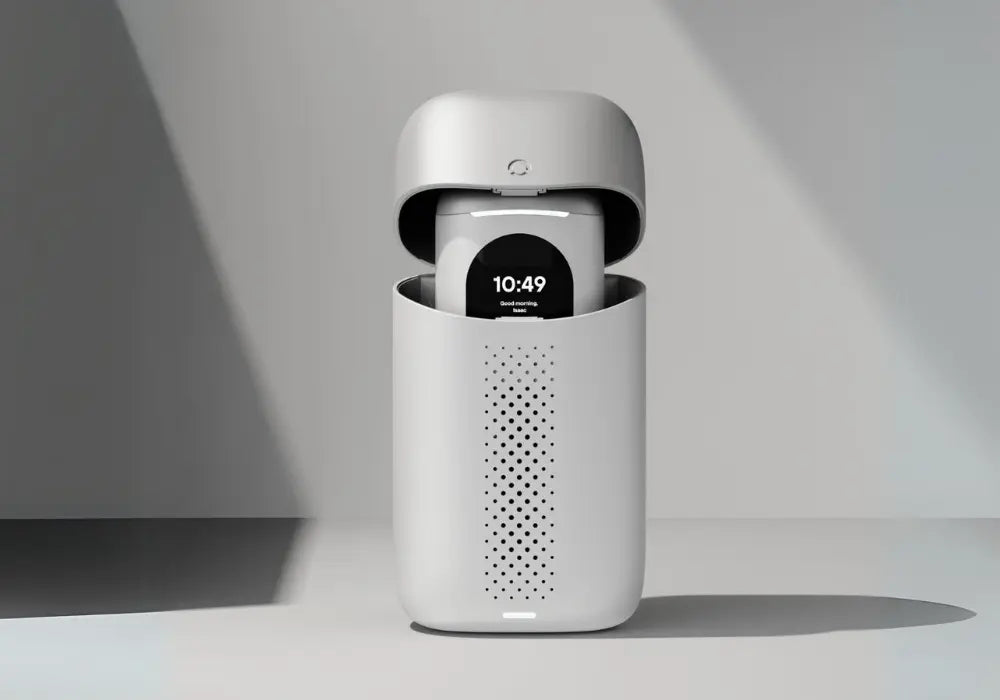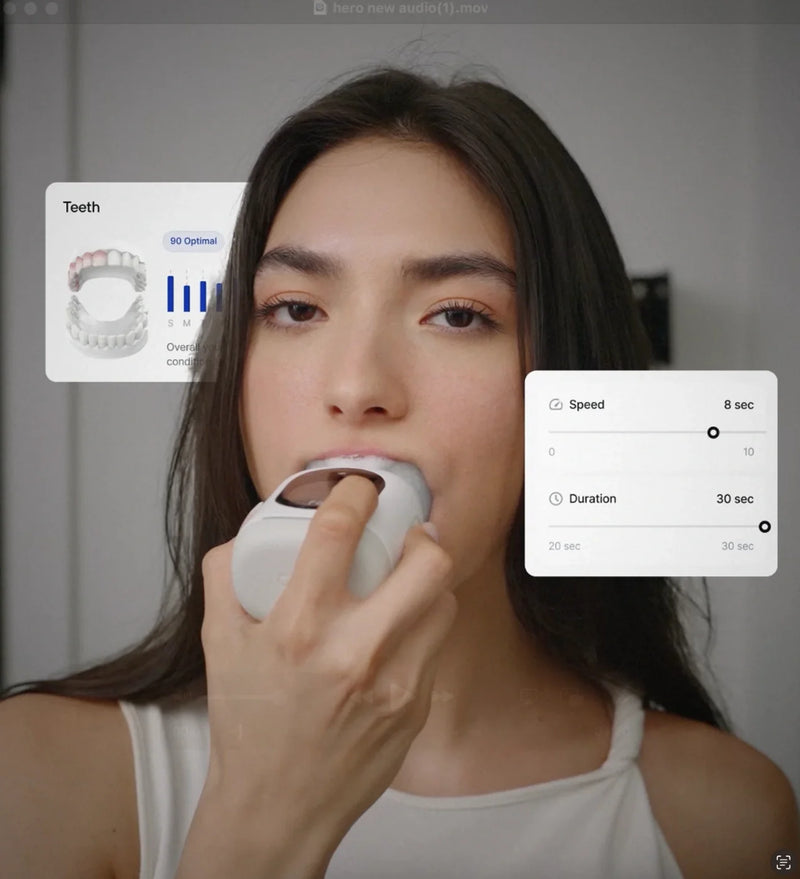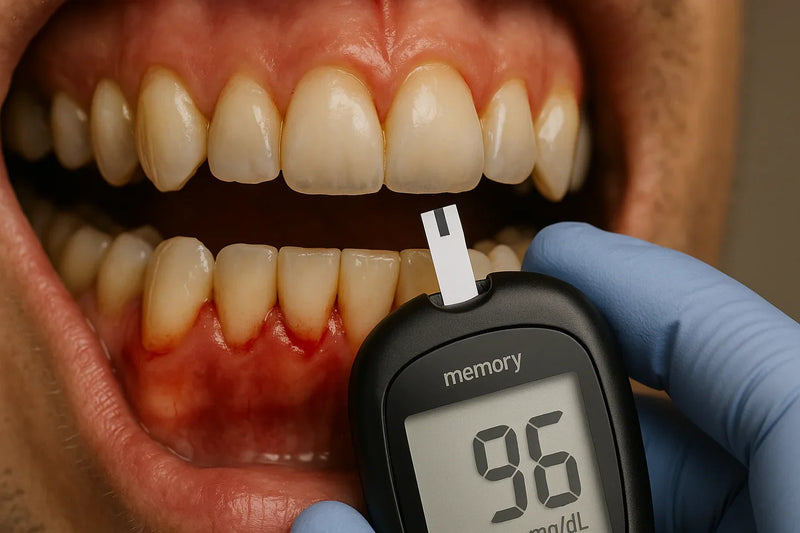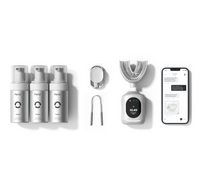
11 min read
Innovative Dental Tools: The Mouth-Shaped Toothbrush for Maximum Coverage
The journey from the basic stick brushes of ancient civilizations to the sophisticated modern toothbrush technology of today tells a fascinating story of innovation driven by the need for more effective oral care solutions. Over the centuries, toothbrush design has evolved significantly, moving from boar bristles set in bone or wood to the latest smart dental cleaning tools. The development of the mouth-shaped toothbrush is a testament to the ongoing commitment to enhance dental hygiene. This evolution reflects a deeper understanding of dental health's complexities and the need for tools that can adapt to the unique contours of each individual's mouth.
Understanding the Mouth-Shaped Toothbrush
What Makes It Unique?
Unlike traditional models, this innovative toothbrush design includes a set of bristles arranged in a configuration that mirrors the anatomy of the human mouth, ensuring consistent contact with both teeth and gums. This maximizes efficiency and significantly reduces the time spent brushing. The brush's ability to cover more surface area without manual dexterity makes it an ideal choice for individuals with mobility issues or those seeking a more effortless brushing experience.
The Science Behind Maximum Coverage Brushing
This concept involves targeting the entire dental arch in one go, which enhances plaque removal and reduces the risk of gingivitis. The bristles are typically powered by smart dental cleaning technology, such as ultrasonic toothbrushes, which use high-frequency vibrations to dislodge unwanted particles and bacteria. This scientific approach improves oral health outcomes and ensures that each brushing session is optimally practical, leaving no area unattended.

How It Compares to Traditional and Electric Toothbrushes
Traditional brushes require physical maneuvering and technique to reach all dental surfaces, often leading to missed spots and inconsistent cleaning. While more effective than manual, standard electric toothbrushes still rely on the user's technique for thoroughness. The automatic toothbrush design of the mouth-shaped model removes user error from the equation, providing a uniform clean across all teeth with minimal effort and improved plaque removal efficiency.
Smart Features and Technology in Mouth-Shaped Toothbrushes
How Ultrasonic Technology Enhances Cleaning Performance
The advanced feature uses high-frequency sound waves to create micro-bubbles that aggressively attack plaque and bacteria buildup. These waves penetrate deep between teeth and along the gum line, areas often neglected by standard brushing techniques. The result is a significantly deeper clean than what can be achieved with mechanical brushing alone, making ultrasonic mouthguard toothbrushes a superior choice for those who value comprehensive oral hygiene.
Hands-Free Brushing
This innovative feature transforms the brushing experience by simplifying the process to a degree where minimal effort is required from the user. Here’s how the hands-free toothbrush stands out:
- Effortless Operation: Once the device is activated, it initiates a pre-programmed routine that intelligently manages all aspects of the cleaning cycle. The design focuses on a seamless startup that requires only the placement of the toothbrush in the mouth, after which the internal mechanisms take full control. Advanced motion sensors and AI-driven algorithms coordinate the movement of the brush to ensure thorough coverage without any manual adjustments. This effortless operation is underpinned by an intuitive interface communicating with the user through subtle signals, confirming that the device is working as intended. Additionally, the integration of smart technology minimizes the possibility of user error, ensuring a consistently high-quality cleaning session every time.
- Uniform Cleaning: Through the use of advanced sensors and precision-guided movement, the brush navigates around each tooth with calculated accuracy. This ensures that no surface, whether it is the front, back, or even the hard-to-reach chewing surfaces, is neglected. Uniform cleaning is achieved by synchronizing the bristles' motion with the mouth's natural contours, adapting to variations in tooth alignment and gum structure. The system can adjust the brushing intensity dynamically, providing a gentle yet effective cleaning action across all zones. This systematic approach not only helps in the prevention of plaque accumulation and cavities but also supports the maintenance of healthy gums. Furthermore, uniformity in cleaning helps reduce the risk of over-brushing certain areas while inadvertently under-cleaning others, resulting in a balanced and efficient oral hygiene routine.
- Ideal for Multitaskers: Designed with the busy modern lifestyle in mind, hands-free brushing technology offers a remarkable solution for multitaskers who aim to streamline their morning routines. This feature enables individuals to maintain excellent oral hygiene without pausing their daily activities. The device is engineered to operate independently, allowing users to perform other tasks simultaneously, whether it’s preparing breakfast, catching up on news, or managing family responsibilities. The hands-free mechanism is supported by a robust automation system that initiates and completes a comprehensive brushing cycle without requiring manual intervention. Its operational efficiency ensures that the cleaning process is completed within a scientifically recommended time frame, freeing up precious minutes in an otherwise hectic schedule. In addition to saving time, the system’s ability to function autonomously reduces the mental burden of remembering to engage in proper oral care. For professionals juggling multiple responsibilities or parents managing busy households, this technology offers a unique blend of convenience and effectiveness.
- Accessibility: One of the most significant advantages of hands-free brushing is its inherent accessibility, making it an indispensable tool for individuals with limited mobility or dexterity. The hands-free design is meticulously crafted to cater to those who may find traditional brushing techniques challenging, such as the elderly, individuals with disabilities, or those recovering from injuries. By removing the need for intricate hand movements, the device provides a straightforward, inclusive solution that empowers users to maintain their oral hygiene independently. The technology incorporates adaptive features that respond to varying oral structures, ensuring every user experiences a personalized and gentle cleaning process. The smart toothbrush for deep cleaning compensates for any physical limitations through automated motion control and smart feedback systems, delivering a consistently thorough cleaning routine. The simplicity of operation minimizes the risk of user error and potential injury, offering a safe alternative for those who might struggle with conventional brushing methods.
- Enhanced Safety: The system is designed to minimize the risks associated with manual brushing, such as accidental over-brushing or the application of excessive force, which can harm gums and enamel. Through a combination of real-time monitoring and adaptive feedback, the device regulates its cleaning actions to ensure that all movements are within a safe and effective range. Advanced sensors continuously assess the pressure applied to each tooth and adjust the brushing intensity accordingly. This approach safeguards the delicate tissues within the mouth and contributes to a more comfortable brushing experience. The technology has built-in safety protocols that automatically modify the cleaning pattern if any irregularities are detected, preventing potential injuries.
By automating the brushing process, it ensures optimal dental care is accessible to everyone, irrespective of their physical capabilities or lifestyle constraints.

Bluetooth Connectivity and Smart Feedback
Modern mouth-shaped toothbrushes often feature Bluetooth connectivity, which allows them to connect to mobile devices and dedicated apps. These applications provide valuable insights into brushing patterns and highlight areas where improvement is needed. Users can track their progress, receive tailored dental care advice, and even set reminders for consistent dental hygiene practices.
The Benefits of a Toothbrush for Maximum Coverage
Deep Cleaning for Hard-to-Reach Areas
The design is specifically engineered to enhance cleaning in hard-to-reach areas of the mouth, such as the back molars and interdental spaces. These areas are prone to plaque accumulation and are often challenging to clean effectively with traditional toothbrushes. The comprehensive reach of the mouth-shaped model ensures that these hidden spots receive thorough attention, reducing the risk of periodontal disease and cavities, which are common in less accessible regions.
Improved Gum Health Through Consistent Stimulation
Consistent and gentle stimulation of the gums is crucial for maintaining gum health and preventing gingivitis. This U toothbrush excels in this aspect by evenly distributing pressure across the gum line during each brushing session. It helps remove food particles and plaque and increases blood circulation in the gums, which is vital for keeping the gum tissues healthy and resilient against bacterial infections.
The Future of Smart Dental Cleaning Tools
The Growing Adoption of AI in Oral Care
Artificial intelligence is making significant inroads in various aspects of dental hygiene, from diagnostic tools to treatment planning and patient education. AI's ability to learn and adapt to individual patient needs is revolutionizing the way dental professionals approach preventative care, making treatments more efficient and tailored to individual health profiles.
Integrating Smart Dental Cleaning with Professional Dental Care
The integration of advanced dental cleaning tools with professional dental care is becoming increasingly seamless and beneficial. Here’s a look at how this is enhancing dental treatment and maintenance:
- Data-Driven Treatments: The collected data is securely transmitted to dental care providers, enabling them to craft highly personalized treatment plans that address each patient’s unique oral health profile. By analyzing trends and identifying deviations from ideal brushing techniques, dentists can recommend precise adjustments, whether that involves modifying cleaning techniques or suggesting specific dental products. This data-driven approach supports the refinement of existing treatment protocols and contributes to predictive analytics, where potential issues are flagged even before they manifest clinically.
- Early Detection: When deviations from normal parameters are detected, both the user and their dentist are alerted, facilitating prompt evaluation and intervention. This early warning system is particularly valuable in detecting conditions like gingivitis, periodontal disease, or even the onset of cavities, which often progress unnoticed until they become severe. By pinpointing issues in their nascent stages, dental professionals can implement less invasive treatments that are more effective and less costly over the long term. It minimizes the potential for complications, ensuring that minor irregularities are addressed before they evolve into major dental problems. In addition, early detection technologies empower patients by providing real-time insights into their oral health, fostering greater engagement in daily dental care.
- Customized Patient Education: Through the detailed analysis of brushing data, dental professionals can comprehensively understand a patient’s habits, pinpointing specific areas that require attention or modification. This personalized insight enables dentists to offer tailored advice that goes beyond generic recommendations, addressing unique challenges such as technique deficiencies or uneven cleaning. Customized educational interventions can include targeted demonstrations, interactive tutorials, or even augmented reality overlays that visualize the correct brushing motion. By understanding the precise shortcomings in a patient’s routine, professionals can better explain the implications of poor oral hygiene and provide concrete, actionable steps to improve. This educational approach also extends to selecting dental products that are best suited for an individual’s condition, whether recommending a softer brush head for sensitive gums or a specialized toothpaste to combat plaque.
- Remote Monitoring: Remote monitoring through efficient oral care devices is revolutionizing how dental care is administered by enabling continuous oversight without the constant need for in-person visits. This technology allows dental professionals to keep track of a patient’s oral hygiene routines and dental health metrics in real-time. Using connected devices, important data such as brushing duration, intensity, and overall effectiveness is continuously relayed to the dental team, providing a near-constant stream of insights. This remote monitoring system ensures that any deviations from expected healing patterns are promptly identified for patients with chronic dental issues or those undergoing recovery from dental procedures. Dentists can adjust treatment plans based on current data, potentially intervening before complications arise. The ability to monitor patients remotely also enhances the convenience and accessibility of dental care, particularly for individuals who may have mobility challenges or live in remote areas. Moreover, this system fosters a sense of accountability among patients, as they are aware that their daily routines are being monitored and evaluated by professionals.
- Enhanced Preventative Care: Detailed records of brushing behavior, plaque levels, and other key indicators facilitate early intervention strategies that can halt the progression of diseases such as cavities, gum inflammation, and periodontal conditions. With enhanced preventative care, routine dental visits focus more on maintaining optimal oral health rather than addressing advanced dental problems. The technology also supports the development of individualized prevention plans that can be adjusted over time, reflecting the evolving nature of each patient’s oral health. Dentists can leverage this data to schedule timely check-ups, recommend specific in-office treatments, and even prescribe at-home care regimens that are tailored to the patient’s condition.
Dental tools for home empower patients and dentists to work together toward a healthier future through data-driven treatments, early detection, customized patient education, remote monitoring, and enhanced preventative care.

As we continue to integrate these modern dental hygiene tools into our daily lives, the benefits extend beyond individual health. They contribute to broader public health goals by reducing the prevalence of dental diseases and decreasing the need for invasive dental treatments. A proactive approach to dental care, powered by technology, is setting new standards in the health industry, illustrating how innovation can lead to greater well-being and overall health efficacy.
Share




